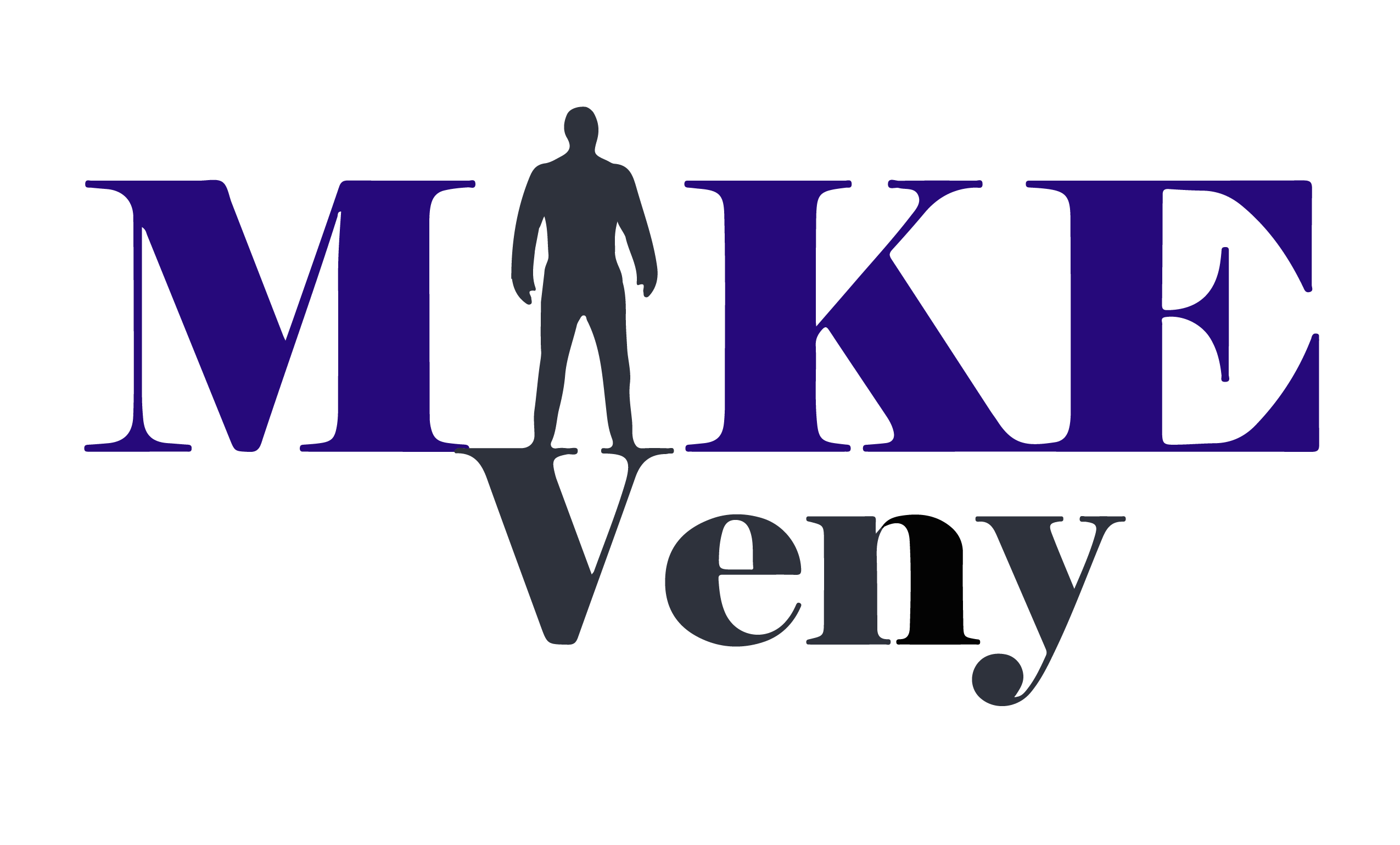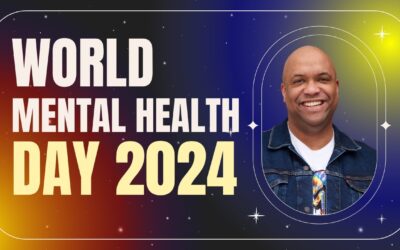
How are you feeling right now? A little uncomfortable after reading the title? I’m not surprised. When you throw the words “minority” and “mental health” into a conversation on their own, things can get a little uncomfortable. Put the words together and add in “majority” and it might feel downright awkward. But July is Minority Mental Health Month and it’s an important topic, so we’re going to jump right in!
If you don’t know me but saw my face smiling back at you up on the top of your screen, you might have noticed something…
I’m black.
Some of what I share with you will be from personal experience as a black man with mental health challenges. But I want to take a different approach to this topic of minority mental health. Here’s what we’re going to look at:
- What are the differences between majority and minority mental health?
- Should we be focusing on individual groups at all?
- What challenges do minorities face that others don’t?
- Why using the right mental health vocab is crucial
- The importance of having uncomfortable conversations
Why focus on minority mental health?
I’ll let you in on something that’s not so secret—mental health doesn’t discriminate. It doesn’t care what color your skin is, what gender you are, who you love, or how much money you make.
Mental health challenges are affecting people all over the world.
Minority Mental Health Month isn’t about minorities having more problems with mental health than others. In fact, the percentage of white people who committed suicide in 2017 was higher than blacks and Hispanics combined. Mental health isn’t about race at all.
There are subtle differences
As I thought about this topic and discussed it with others, there was a word that kept coming back to me—subtle. See, when it comes to mental health, races aren’t that far apart. It’s not that all white people are educated on the topic and get the help they need while minorities are quietly suffering.
For instance, the Substance Abuse and Mental Health Services Administration collected data over a 4-year period that looked into why people with unmet mental health needs didn’t get help. Participants could choose from 5 different reasons including:
- Cost/Insurance: Could not afford treatment
- Low perceived need: Thought they could handle it on their own
- Prejudice/discrimination: Thought it would negatively impact their jobs or relationships
- Structural barriers: Didn’t know where to go for help or how to get themselves there
- Concerns over effectiveness: Didn’t think it would work
There was less than a 1% difference between blacks, Hispanics, and whites for structural barriers. And the other categories are close as well.
Maybe as a society, our perception has a large impact on why we think “minority” mental health needs its own special focus. As we strive for inclusion in our country, diversity is still a very real dilemma that needs to be addressed.
Being a black man, I’m considered to be part of a “minority” group. I have mixed feelings about this at times. I think that just focusing on “black people” sometimes contributes to division. At the same time, the other side of me knows that there are challenges black people face when it comes to mental health that others don’t face in the same way. But these differences are subtle and we can’t ignore the fact that the “majority” also have their own unique challenges that minorities don’t.
This is where the challenge lies.
How do we address mental health?
Let’s focus for just a minute on minority mental health alone. This isn’t a new topic for me. It’s been part of my life as long as I can remember and it’s something that I’ve researched as well. I even have a video on my YouTube channel where I talk about five things that we need to address in the minority community in order to improve mental health.
- Fix poverty. There is a disproportionate number of minorities living at or below the poverty level. They don’t have the means to get the help they need.
- Address the lack of resources. Mental health resources aren’t as abundant in minority communities. We need mental health professionals who are willing to come into the community and invest in and care about the people. Even helping people learn what hotlines they can call for free can help.
- The role of culture. Minority communities typically have strong cultures and pride. This can get in the way of people admitting that they need help because they don’t want to appear “weak”. But we can change the culture.
- Address the trends. Herd mentality can cause people to fall in line with others. Changing the trends can help to change the behavior.
- Educate the church. In minority communities, churches play a central role, so it’s important to get churches talking about mental health with the right tools in hand.
Where does this leave the majority? Take a moment to look over those five areas of focus again:
- Poverty
- Lack of resources
- Culture
- Trends
- Church
Can they apply to white people as well? Absolutely.
With subtle differences in the descriptions, this video could be about how to help white people improve their mental health. These areas are problems for people of all colors when it comes to getting the help they need. It’s just the details that are subtly different.
Why we need a focus on Minority Mental Health
I recently read a book by Seth Godin called This is Marketing. Throughout the book, he uses the phrase “People like us, do things like this”. And I think this phrase can be applied to why it’s necessary to focus on minority mental health at times apart from just grouping everyone together.
Many black people feel that the way they do things is different from how white people do things. For example, some might have a hard time identifying with the way white people speak. Even if the differences are very subtle, the perception that the differences are there makes it a bigger deal. The same can be true for other races as well.
This perception can stand in the way of people getting the help they need.
So, if the only messages that are being delivered about mental health are given by white people, some minorities may feel that the message isn’t for them. They see the differences, and that makes it hard to feel like the same truths that apply to the majority apply to them as well because “people like us, do things like this”.
Examples from my own life
I travel the country as a mental health speaker. One of the places where I’ve spoken multiple times is in Columbia, Missouri. They continue to bring me back because there’s a room full of black children who haven’t seen a black adult male who isn’t a thug or who speaks straight English the way the children are being taught in school.
When these children see the color of my skin, they identify with me. A white man could come and deliver the exact same message as me to that same group and it probably wouldn’t have the same effect. It’s the subtle difference that makes the biggest impact. “People like us, do things like this.”
Here’s another example. Two of my friends who are black men speak the same way as me. When we first met, there was an immediate bond because of this. There are times when others in the black community tell us that we “speak white”. To me, I’m just speaking English the way I learned in school. Because these two men have the same similarity to me in this area, it made me more comfortable immediately. “People like us, do things like this.”
The same applies to all people, including the majority. We are most comfortable with people, things, and ideas that are familiar to us. That’s why a focus on Minority Mental Health can be more effective at reaching minorities. The messages are directed and tailored specifically for us.
Subtle shifts that we can make to help mental health in everyone
1. Change the language
One of the obstacles that stands in the way of people getting the help they need is the language they use. For example, in the black community people are less likely to say that they are feeling “anxious” or “depressed”. Instead, they might think they are sad or worried. Because these are normal things that everyone deals with, they brush it off, thinking that they need to just toughen up and deal with it on their own.
But if we’re able to help shift the language to the real names of mental disorders and challenges, people might start to seek treatment.
This is a benefit that can help every group of people. The trick is spreading the message using the language that they’re familiar with while teaching them the correct terminology to use.
Another way that we need to change the language of mental health is by using people-first language. Our mental health challenges don’t need to define us. Instead of saying “He is bipolar” you should say “He has Bipolar Disorder”. It’s that subtle shift again that makes all the difference.
2. Teach that mental health challenges are not a weakness
It’s been amazing over the past few years to see the progress that this world has made in changing the stigma around people with diagnoses such as autism, Down syndrome, and cerebral palsy. There are people out there living with these diagnoses that are shining brightly in the world.
For most of history, many of these same people didn’t have the chance they do now. They weren’t encouraged to pursue their dreams, and so their challenges held them back in life. Thankfully times are changing for them. People all over are showing that they are perfectly capable and that they aren’t “weak” or “unable” because of their disability.
Look at Brian Burk, who is going to be competing in the Vegas finals of American Ninja Warrior this year in spite of autism. And who hasn’t heard about the amazing performance of Kodi Lee, who is blind and has autism, on America’s Got Talent. Disabilities no longer need to be viewed as a liability, and this includes mental health disorders.
I view my mental health challenges as an asset. And I believe this is an important message that we need to get out to the rest of the world. Mental health challenges aren’t a liability and they don’t make you weak.
3. Make it part of the everyday conversation
Remember when it was taboo to talk about gays? Of course you do, it wasn’t that long ago. The LGBTQ community has made massive strides in gaining acceptance and equal treatment in a short amount of time because they pushed their agenda into the everyday conversation. By doing this, they made it more comfortable for people to talk about.
This is what needs to happen with mental health in every community. Black communities. Latino communities. Asian communities. White communities. American Indian communities. The list goes on and on.
We all need it.
If you have a mental health diagnosis, don’t be afraid to talk about it. If you have questions about mental health, ask someone. Share your story so you can be an encouragement to someone else to do the same. Once people realize that mental health challenges are more “normal” than they thought, it will break the stigma and help them to get the assistance they need with no shame.
It’s got to get awkward before it gets better
The best thing we can do to improve mental health – in all people – is to start having those awkward conversations between races. Right now, society is unwilling to do this.
We’re walking on eggshells in the world right now and we need to be able to move past that and have those awkward and uncomfortable conversations. We need groups of mixed races to discuss together what their own mental health obstacles and challenges look like.
And until we succeed at breaking down those racial barriers, we need specific messages around mental health targeted at each different group. Why? Because as Seth Godin said, “People like us, do things like this.”



